Alocasias: [Cultivation, Irrigation, Care, Pests and Diseases]
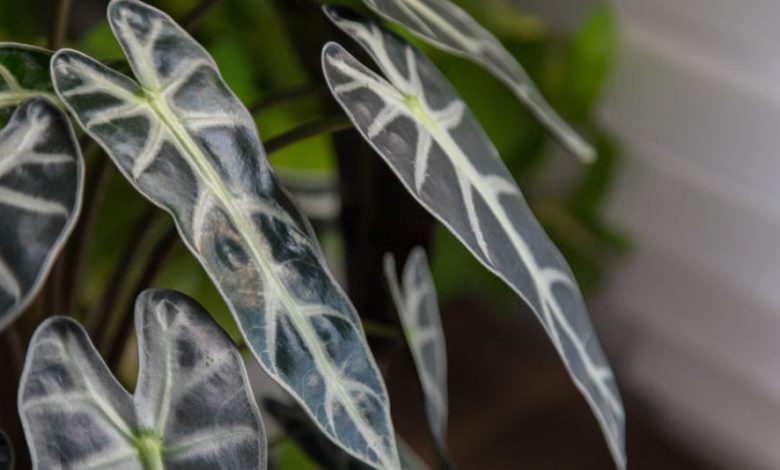
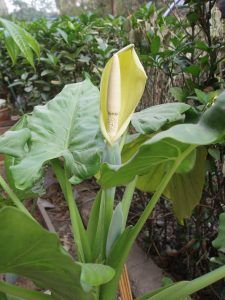 Alocasia is a very large genus of plants that belongs to the Aracae family , which consists of about 80 plant species. These plants are native to Asia and Australia.
Alocasia is a very large genus of plants that belongs to the Aracae family , which consists of about 80 plant species. These plants are native to Asia and Australia.
However, they have been distributed in multiple tropical and subtropical climate regions around the world. The Alocasia are plants that stand out for the beauty of their large, evergreen leaves.
They are generally used to decorate interior and exterior spaces, as well as in gardens due to their adaptability. Among the most popular species are the A. macrorrhiza, the A. amazónica, the A. wentii, among some others.
However, the cultivation guide for Alocasia macrorrhiza will be discussed in this article.
Important points when sowing an alocasia:
- Scientific name: Alocasia macrorrhiza.
- Common name: Alocasia, elephant ear, marquise, garden taro, colocasia, Santa María mantle, alcocaz, yam.
- Height: 5 meters.
- Need for light: Semi-shade and shade.
- Temperature: Warm and temperate climates (20ºC -25ºC).
- Irrigation: High.
- Fertilizer: Organic fertilizer rich in potassium.
What characteristics does alocasia have?
Alocasia macrorrhiza is a large, edible perennial herb that can grow up to 5 meters tall. In addition to growing quickly, it easily adapts to changes in climate and to different types of soil.
The also called elephant ear, consists of a network of shallow fleshy roots, approximately 1.5 meters. From this system, buds develop that make new plants or “suckers” sprout.

The stem is a succession of terminal buds formed by the petiole of the leaves and they are detached as they mature. During a year it can reach 1 meter in height and, at more mature ages, 4 or 5 meters.
Alocasia leaves are bright green, large and segmented. They can measure 1 meter long by 80 centimeters wide. It differs from other species by presenting a purple pigmentation on the edges of the petioles.
The flower is a spadix inflorescence with a conspicuous white and violet spathe, sprouting from between the petioles of the leaves. It is presented one at a time.
When to plant alocasia?
It is recommended to sow alocasia plants during spring, a time with warm temperatures that generally corresponds to the rainy season.
Where to plant alocasia?
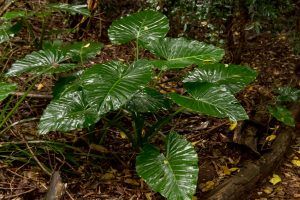 Alocasia can be grown in medium and hot climates, with temperatures between 20ºC and 24ºC, with minimum temperatures of 10ºC to 15ºC.
Alocasia can be grown in medium and hot climates, with temperatures between 20ºC and 24ºC, with minimum temperatures of 10ºC to 15ºC.
It needs large places and humid environments, in the shade or semi-shade. It is important to place it under the shade of a leafy tree, as solar activity can discolor its leaves and burn them.
How to prepare the land?
Alocasia can be grown in different types of soil. However, it develops better in those with a clay loam texture, well drained; with a pH of 5.5 and with a minimum of 4% organic matter or peat.
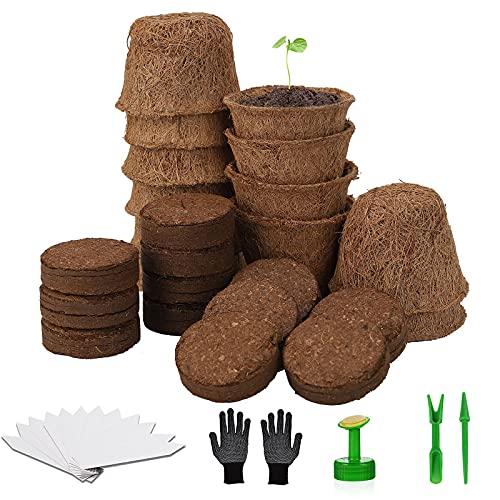
A perfect substrate composition to grow alocasia in pots would be the following:
- 30% leaf land.
- 20% garden land.
- 20% homemade organic matter such as compost.
- 20% sand.
- 10% perlite.
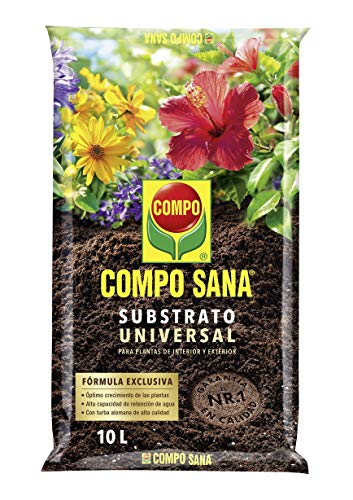
How do we water alocasia?
When alocasia is outdoors, it is recommended to water manually and apply it evenly to the soil and keep it moist.
In the event that it is grown indoors, it is recommended to place it on a pot stand filled with river stones and water, avoiding that the bottom of the pot has direct contact with water. Applying this technique will favor the absorption of water by evaporation.

On the other hand, if the ambient temperature rises, it is advisable to spread water with an atomizer on the foliage, gently and carefully. With this measure it will be possible to prevent the dehydration of the plant.
How often do we water the alocasia?
The alocasia needs frequent and abundant watering, especially during the summer. However, it is recommended that the topsoil dry out a bit between waterings to prevent water stagnation and root rot.
On the other hand, it is convenient to reduce irrigation during the winter and moisten the substrate when it requires it.
How to plant an alocasia step by step?
Alocasia can be grown by buds, suckers, stem sections or buds. Cultivation methods for stem sections and rhizomes are shared below.
By stem sections
- Cut horizontally a section of the stem of an already harvested alocasia. Usually 20 disks are produced from a 1 meter stem.
- Sow the disk 3 centimeters deep, on a moist substrate, in a hole 20 centimeters in diameter and depth. Wait for the bud to emerge after 6 weeks.
by rhizomes
- Remove the rhizomes that form on the sides of the mother plant. Alocasia generally produces 2 or 3 per plant.
- Apply powdered sulfur -based fungicides to cut areas and allow them to dry for a couple of days.
- Place the rhizomes 2 centimeters deep, in a pot with a substrate made up of peat and sand. Place the pot in a warm and shaded place.
- Water abundantly and keep moist until a couple of true leaves sprout from the plant.
What care does alocasia need?
Alocasia is a plant that does not need demanding care. However, here are some suggestions that can improve your crop:

- When the alocasia is inside, turn the pot periodically so that the lighting hits it evenly and its shape is not altered.
- During the growing seasons of the plant, fertilize it with an organic fertilizer that contains nitrogen, phosphorus and potassium.
- It is advisable to wash the leaves of the alocasia periodically to avoid the accumulation of dust. This can be done by taking it outside during a light rain, or by wiping the leaves with a damp cloth.
- When the leaves lose their vitality, remove them from the stem to avoid the appearance of diseases.
What pests and diseases affect alocasia?
Alocasia is very resistant to diseases and pests. However, it can be affected by whitefly and cottony mealybug.
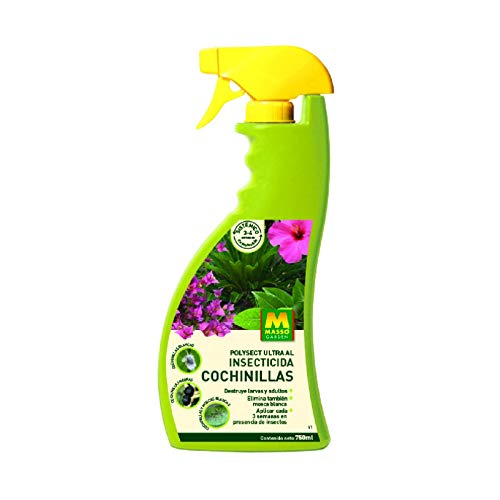
References
- http://pehsu.org/wp/wp-content/uploads/planta_hogar_pehsusambi.pdf
- https://repository.agrosavia.co/bitstream/handle/20.500.12324/2080/38159_19912.pdf?sequence=1&isAllowed=y
- https://www.ecured.cu/Alocasia_macrorrhizos
- http://www.fao.org/3/y4435s/y4435s0i.htm
- https://en.wikipedia.org/wiki/Alocasia
- https://www.google.com/url?sa=t&rct=j&q=&esrc=s&source=web&cd=&cad=rja&uact=8&ved=2ahUKEwikhMz_6s7vAhWHZs0KHVqgBQEQFjADegQIBhAD&url=http%3A%2F%2Frevistas.sena.edu.co%2Findex.php% 2Friag%2Farticle%2Fdownload%2F313%2F335&usg=AOvVaw0mE21Bj_8mJURgyz5OZnjy
- https://tiendahusqvarna.com/blog/alocasia/
- https://www.elicriso.it/es/como_cultivar/alocasia/

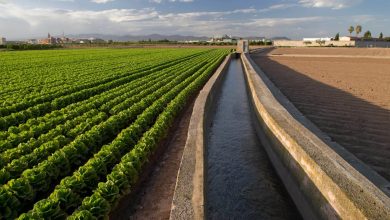
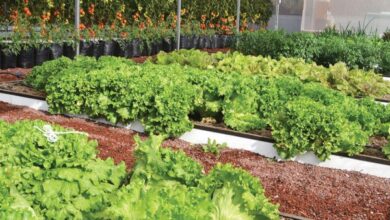
![Photo of Brown Spots on Leaves: [Detection, Causes and Treatment]](https://www.complete-gardening.com/wp-content/uploads/2022/08/brown-spots-on-leaves-detection-causes-and-treatment-390x220.jpg)
